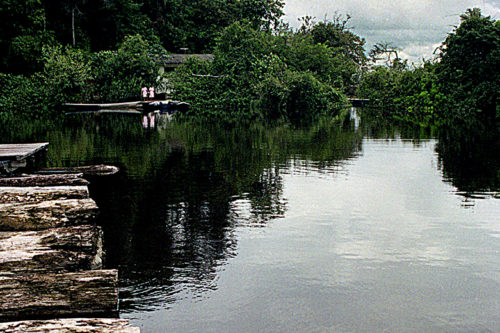The ecosystem’s response is lagging behind the rate of climate change.
The Amazon is sometimes called the lungs of the planet. About 7,900 sq km of the world’s largest rainforest was destroyed between August 2017 and July 2018, which means a negative record in the last decade. The latest government data says most of the deforestation occurred in the states of Mato Grosso and Pará, and marked a 13.7% rise over last year’s figures. Mato Grosso is the top producer of grains in Brazil, and critics say expanding agriculture is also encroaching on the rainforest.
A team of more than 100 scientists has assessed the impact of global warming on thousands of tree species across the Amazon to discover the winners and losers from 30 years of climate change. Their analysis found the effects of climate change are altering the rainforest’s composition of tree species but not quickly enough to keep up with the changing environment. Their results found that since the 1980s, the effects of global environmental change – stronger droughts, increased temperatures and higher levels of carbon dioxide in the atmosphere – has slowly impacted specific tree species’ growth and mortality. Lead author Dr Adriane Esquivel Muelbert, from the School of Geography at Leeds, said: “The ecosystem’s response is lagging behind the rate of climate change. The data showed us that the droughts that hit the Amazon basin in the last decades had serious consequences for the make-up of the forest, with higher mortality in tree species most vulnerable to droughts and not enough compensatory growth in species better equipped to survive drier conditions.”
In addition, the study shows that pioneer trees – trees that quickly spring up and grow in gaps left behind when trees die – are benefiting from the acceleration of forest dynamics. Intact territories are also affected which have not been reached by deliberate destruction yet. There is no forest cutting there – neither because of Brazilian soy production (which is typical for huge regions), nor because of mega farms satisfying the ever growing beef needs of the world, nor because of mines – so that is the most important vegetation storage of mankind. Amazonia in itself represents nearly half of all rainforests on Earth.
Co-author Dr Kyle Dexter, from the University of Edinburgh, said: “The impact of climate change on forest communities has important consequences for rain forest biodiversity. The species most vulnerable to droughts are doubly at risk, as they are typically the ones restricted to fewer locations in the heart of the Amazon, which make them more likely to be extinct if this process continues. Our findings highlight the need for strict measures to protect existing intact rainforests. Deforestation for agriculture and livestock is known to intensify the droughts in this region, which is exacerbating the effects already being caused by global climate change.”
(source: BBC; international research)
Riberinhos, living in the Amazon basin, outside civilization are also affected by climate change and its side effects in the region. The pictures were taken along the following rivers: Iguaçu, Paraná, Rio Negro, Rio Solimões and Amazonas.



Leave a Reply